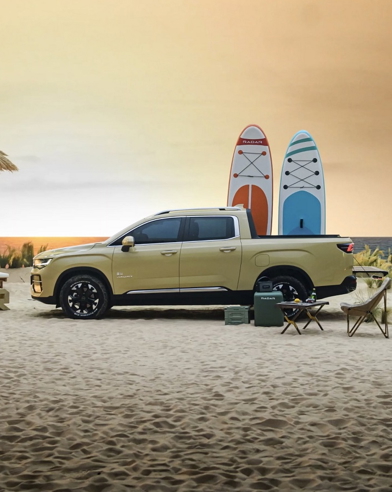The 2017 FIA Formula E Mexican ePrix will go down as one of the standout races of the year — packing almost as many passes in 45 laps as Formula 1 had in its entire season.
It was a race filled with chaos from start to finish; won by someone who rebounded from last, and featuring Kiwi Mitch Evans breaking through to earn a maiden top-five for his Panasonic Jaguar Racing team.
And yet, the all-electric category continues to attract a barrage of critique from motorsport fans as it searches for mainstream acceptance.
“I honestly think that if you’re a true motorsport fan, you appreciate good racing, great talent, and great brands in the sport,” Evans told Driven.
“I don’t know why people have this narrow mind-set of being against Formula E just because it’s electric. If you look at the bigger picture and where the world’s heading, it’s a no-brainer to start supporting it. It’s still motorsport, it’s still great racing. I think it’s better racing than most of the championships in the world, to be honest.”
After competing in Formula 1’s junior category undercard for six years, running toe-to-toe and occasionally beating the likes of current F1 stars Valtteri Bottas, Pierre Gasly, and Stoffel Vandoorne, Evans’ career in international open-wheelers appeared to be on the rocks.
But a lifeline from Jaguar soon changed that.
Photo / Getty Images
“[In 2016] I was expecting to be battling at the front of GP2. But for some reason it was one of the worst years of my life.
“I don’t know why, and the team [Campos Racing] are still struggling now. We ended 2015 testing as quickest, and then went to 2016 and it was like everything fell apart. Once I got involved with Jaguar and got the seat, I really realised how much that this is the future.
“The whole automotive industry is changing, whether we like it or not, we’re going electric. F1 used to be that testing bed for the automotive industry, but now they’re just so far in their own little world with the hybrids that they’ve got now.”
Debuting in the 2016–17 Formula E season as comprehensive rookies with an older engineering package, Jaguar struggled. Evans was its leading points scorer, ending the season in 14th.
“We knew early on last season that we had a power train that was not competitive enough to be battling for top positions. It was painful at times, really painful. I think we all suffered a little bit with that.
“But we always had the bigger picture in mind; that come the next season we should be in a better position.
“I was used to that big high grip, high downforce, and huge power in GP2, which I love. I just love being on the edge with that sort of machinery. It’s putting your body and physics to its limits.
“[Formula E] is very complex. The cars, the braking system require a very different technique. It’s very rewarding, it’s very competitive ... probably the most competitive championship I’ve ever raced in.”
Photo / Getty Images
It was with a lot of anxiety that Evans, Jaguar, and new teammate Nelson Piquet jnr returned to the fray for the 2017–18 Formula E season opener in Hong Kong.
After such a downcast first season, the impact of their hard work during the off season was immediate. Evans was either first or second in all of the event’s practice sessions. Issues in qualifying didn’t help, but come race time the former Toyota Racing Series champ was on leading pace.
A third place in race two (Jaguar’s first podium) means he sits sixth in the championship standings, one spot ahead of teammate Piquet jnr.
“We seem to be one of the benchmarks over one lap, but we can’t seem to translate it over the course of a race distance. That’s what we’re mainly focusing on now.
“It’s a huge relief. We’re born to be competitive and last year was painful for us, but you have to keep composed and look at the bigger picture.”
It’s still early days, however. There are 10 rounds to go in the 2017–18, spread across Europe, North America, and South America.
With a bit of luck, New Zealand will appear in that list soon enough.




